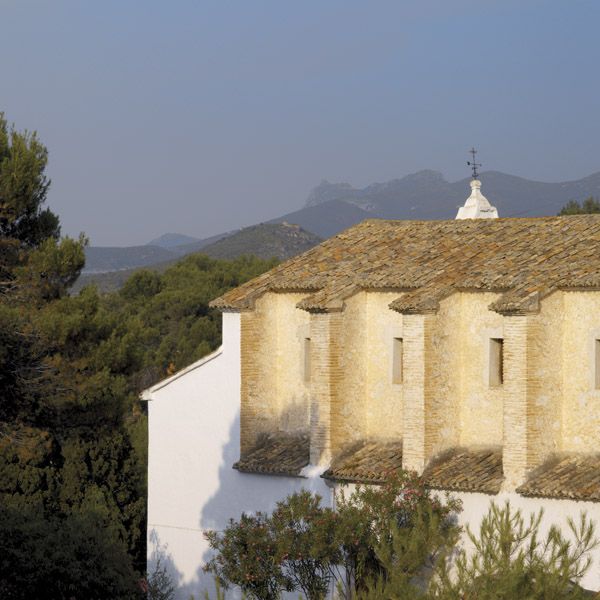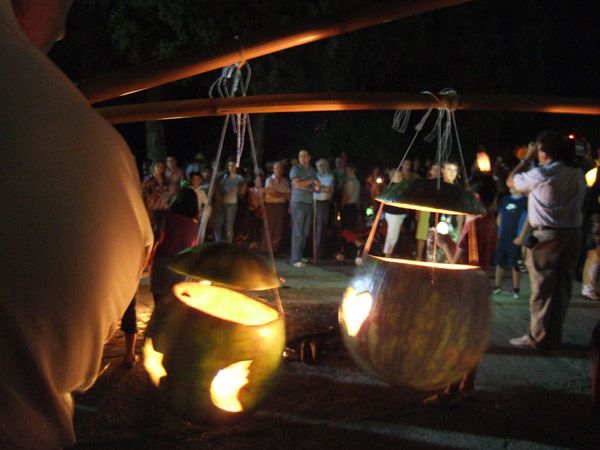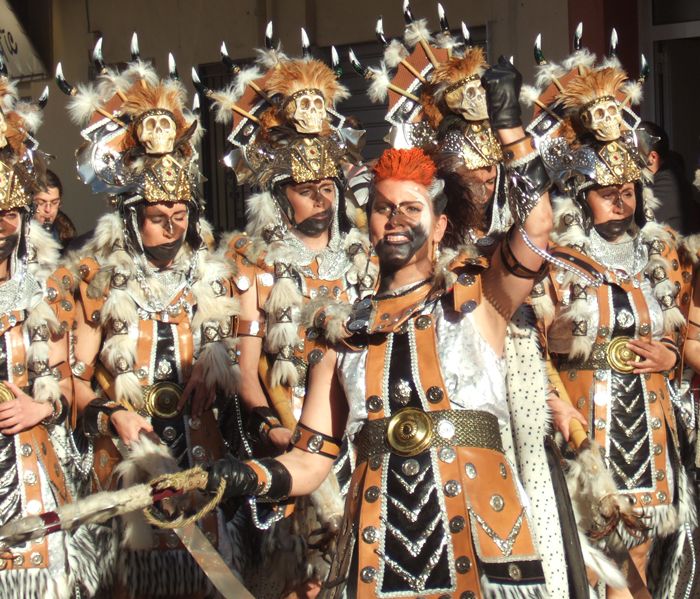Agullent
Agullent is unique, as its location offering all the charm of living at the foot of the mountains, enveloped in the scent of thyme. It has 2364 inhabitants and two festivities that have been declared of Valencia Regional Local Tourist Interest, these being the Moors and Christians festivities (held the week following Easter) and “La Noche de las Hogueras y Fiestas del Milgaro (The night of bonfires and the festivities of the miracle), held at the beginning of September. Aguillent has also been declared a Municipality of Tourist Interest.
The production of traditional sausages, candles and the balls used in the Valencian game of “pelota” are some of the artisan activities that have survived from the past. There is a striking architectural legacy that can be evidenced in many areas of the municipality, such as “Fornet de la Neu”, “Los Lavadores”, the Convent of Saint Hyacinth, the Hermitage of Saint Vicent Ferrer, the church of Saint Bartholomew and the “Font Jordana” Park. It lies 5 km from Ontinyent, the capital of the administrative region, and less than an hour from Valencia.
Gastronomy:
Cured sausages with character
The use of pork for sausage-making is a very old practice in the interior of the Valencia Region, and in general throughout the Mediterranean. Derived from the tradition of pig slaughtering, and with the individual touch of each master butcher, Agullent’s cured meats and sausages have become a reference throughout the entire administrative region.
Carnicería Luis i Pilar
c/ Sant Bertomeu, 1
962 90 70 83
Carnicería Artesanos Guerola
c/ del Marquès, 3
962 90 70 91
Organic beer
Agullent is host to a young cooperative dedicated to the manufacture of ecological and craft beer that is sold under the Lluna brand. It is an unfiltered, unpasteurized beer with a higher proportion of malt and hops extracts, and with antioxidant and healthy properties. All its ingredients come are obtained organic agriculture and the carbonic gas employed is completely natural.
Articultura de la terra Coop.V
Tel./ fax 96 290 76 25
info@articultura.ecsocial.com
info@bodegaartesana.com
www.bodegaartesana.com
Wines
Since 1955, two generations of Francisco Gandía’s family have been dedicated to the world of the vineyard. With production centred in some 35 hectares in the “El Galtero”, “El Catali” and “La Vega” estates, which are located in the Vall d’Albaida, the company has obtained wines that have been granted awards such as “”L’Acvlius”, “CVP”, “Rosa Rosae” and “Vall Blanca”.
The vines of la Casa de les Vides are planted at 400 m above sea level in earth that is typical of the area: white clay and limestone soils, which provide acidity and freshness. Grown in trellises with an east to west orientation, the vines receive perfect aeration and good insolation.
Places of interest:
La Font Jordana
Children’s play area, walking area and bar-restaurant. The 5-spouted fountain, which gives its name to the park, is the source of fresh water that originates in “las Penyetes” and which is carried via an irrigation canal to the old town. Various trails that lead to the most charming corners of the municipality and the Serra d’Agullent range have their starting point at “Font Jordana”. A place that encourages calm and invites relaxation.
Lavoirs and springs
Of the three lavoirs that exist in the village, two can still be found in very good condition in the old centre of Agullent. The “lavadero de arriba” can be reached from “Font Jordana”, following the path alongside the irrigation canal. A huge roof provides shade and rest to those wishing to stop and listen to the sound of water.
Convent of Saint Hyacinth
The cloistered nuns jealously guard the secrets of this clerical building, which functioned as a shelter for Republican refugees during the Spanish Civil War. This Dominican convent originally dates from the 16th century and was built at the behest of a local couple. The chapel of Our Lady of the Rosary has paintings attributed to Josep Renau, father of the poster artist. The church is the only visitable area.
Flour Mill (“Molí Fariner”)
This mill, which employed the water obtained for “Font Jordana” for the milling of wheat and corn, was active for more than four centuries. From the 15th century to the 1980s of the 20th century, the flour mill carried out its original function. Today it is a restaurant and rustic hotel. There is a museum on the ground floor where some of the original mill machinery is conserved.
Church of Saint Bartholomew
Sober and discreet from the outside, the interior of the church is invaded with Valencian Churrigueresque Baroque. The “Altar of the Souls” altarpiece, which represents the final judgment, is attributed to the school of Juanes. Originally constructed in the Renaissance style, the temple acquired its current Baroque appearance in the 17th and 18th centuries.
Hermitage of Saint Vincent
Leading from “Font Jordana”, a cypress-lined rise takes the visitor to this shrine, located at the foot of the Sierra de Agullent range, and which each 3rd September is the destination of a pilgrimage composed of hundreds of people. Built in the 18th century, the hermitage has an adjacent building used for spiritual exercises, as well as a hostel and a restaurant serving homemade products.
Fornet de la Neu
A small snow storage installation, which has recently been restored and is visitable, it is testimony to an extinct economic activity: the snow trade. Topped with a dome, it is listed as one of the 137 snow caves surveyed in the South Baetic sector. It was used at a strictly local level, and the snow and ice stored was not sold on the wider market.
Festivities:
Moors and Christians
Coinciding with the first weekend after Easter, and thus with the celebration of the festivities dedicated to Saint Vincent Ferrer, Agullent celebrates its Moors and Christians festivities. A festivity that commemorates the struggles and wars between the Christian and Muslim kingdoms, a symbolism that can be seen in the acts known as “Las Entradas”, “Las Dianas”, “Los Alardos” and “Las Embajadas” during which the verbal clash for the domination of the castle, which closes the festivities, is staged.
Festivities of the Miracle of Agullent
The festivities of “El Miracle d’Agullent” include one of the oldest nocturnal pilgrimages in the Valencia Region. They also serve as a good excuse to visit Agullent. At night on the first Friday in September, villagers and visitors alike walk up to the Hermitage of Saint Vincent Ferrer with lanterns and torches to commemorate the miracle of the plague. Together, they sing and then wait in line to cover themselves with the miraculous oil of the lamp of Saint Vincent.
Independently of the participants’ religious beliefs, over the centuries “la Nit de Fogueres d’Agullent” (Agullent Bonfire Night) has become a great testimony to the festive heritage of Valencia’s inland regions. An act of great historical, cultural and ethnological value, it has been declared a Festival of Tourist Interest.






